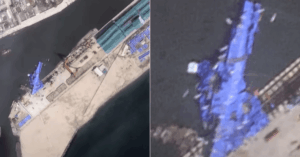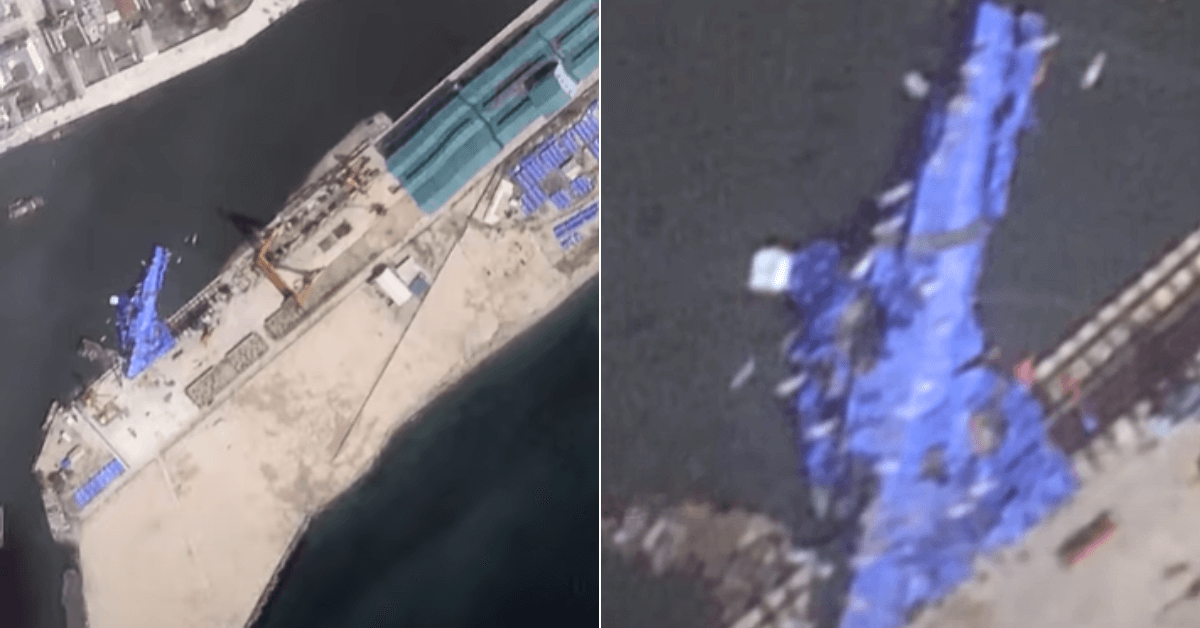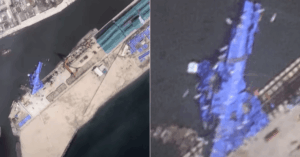
Ukrainian Officer Charged After Cargo Ship Grounds Near Norwegian Shore
May 24, 2025
ABS Approves First-of-Its-Kind LCO2 Barge For U.S. Operation
May 24, 2025

North Korea has launched a full-scale investigation into the failed launch of its second 5,000-ton destroyer earlier this week.
The destroyer sustained damage during a launch ceremony on May 21 at the northeastern port of Chongjin after a transport cradle under the ship’s stern detached prematurely.
The incident caused sections of the warship to lose balance and tip into the harbor, with satellite imagery later showing the vessel on its side, draped in blue tarpaulins.
Initially, state media reported that parts of the vessel’s bottom were crushed, but a follow-up inspection revealed no holes in the hull. Instead, the damage included scratches to the starboard hull and seawater flooding into the stern section through a rescue channel.
Authorities now claim the damage is “not serious” and estimate repairs could be completed within 10 days.
Despite the revised assessment, Kim, who witnessed the launch, criticised military officials, scientists, and shipyard workers for what he described as an “unpardonable criminal act caused by absolute carelessness.”
Video Credits: CRUX/X
The Central Military Commission has summoned and is investigating Hong Kil Ho, the manager of the Chongjin shipyard.
Experts and observers remain sceptical of Pyongyang’s damage assessment. Satellite images and external analyses suggest more severe structural issues, with some experts pointing to potential flooding of the engine room. Analysts believe repairs could take months or longer.
Military analysts say the mishap was likely due to inexperience with launching large-scale warships. The 5,000-ton destroyer, thought to be similar to the Choe Hyon destroyer unveiled last month, is North Korea’s most advanced warship to date.
The latest launch attempt employed a sideways launching method, unfamiliar to North Korean shipbuilders accustomed to handling smaller cargo and fishing vessels.
South Korea and independent observers believe North Korea is using its public response to the incident to enforce stricter discipline and show Kim Jong Un’s control over military-industrial operations.
References: SCMP, YNA
Source: Maritime Shipping News


